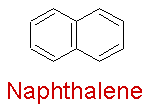CREOSOTE CONTAMINATION
IN A RESIDENTIAL ENVIRONMENT: PART I
Gas Chromatography/Mass Spectrometry Analysis of
Residential Structural Wood For Polynuclear Aromatic
Hydrocarbon Due to Creosote Contamination
(EPA Methods 3550B/8270C; Test Methods For Evaluating Solid Waste, SW 846)
[ISBN 0-9741100-4-3]
$22.50 (US)
(40 Pages of Text + 13 Exhibits)
Structural wood providing subfloor support (joists, girders) at a residence located in Los Angeles, California was suspected of Creosote contamination and therefore tested for polynuclear aromatic hydrocarbons. 85% of the composition of creosote wood preservatives consist of polynuclear aromatic hydrocarbons which are reasonably anticipated to be human carcinogens (National Toxicology Program, Report on Carcinogens, 11th Edition). Seventeen (17) polynuclear aromatic hydrocarbons are commonly found in coal tar creosote. This gas chromatography/mass spectrometry chemical analysis of a composite wood sample obtained from a single family residence confirms the presence of twelve (12) polynuclear aromatic hydrocarbons, each present in the wood at an extremely high concentration.
CONTENTS
I. Summary of Findings
A. Analytical Results
II. Analytical Methods
A. EPA Method 3550B/8270C
B. Method Protcol EPA Method 3550B/8270C
III. Analytical Results
A. Wood Sample Extract
B. Quantitation of Target Analytes in Wood Sample Extract
C. Mass Spectral Confirmation of PAH's in Wood Sample Extract
D. Quality Control Testing
IV. Discussion
$22.50 (US)
|
|